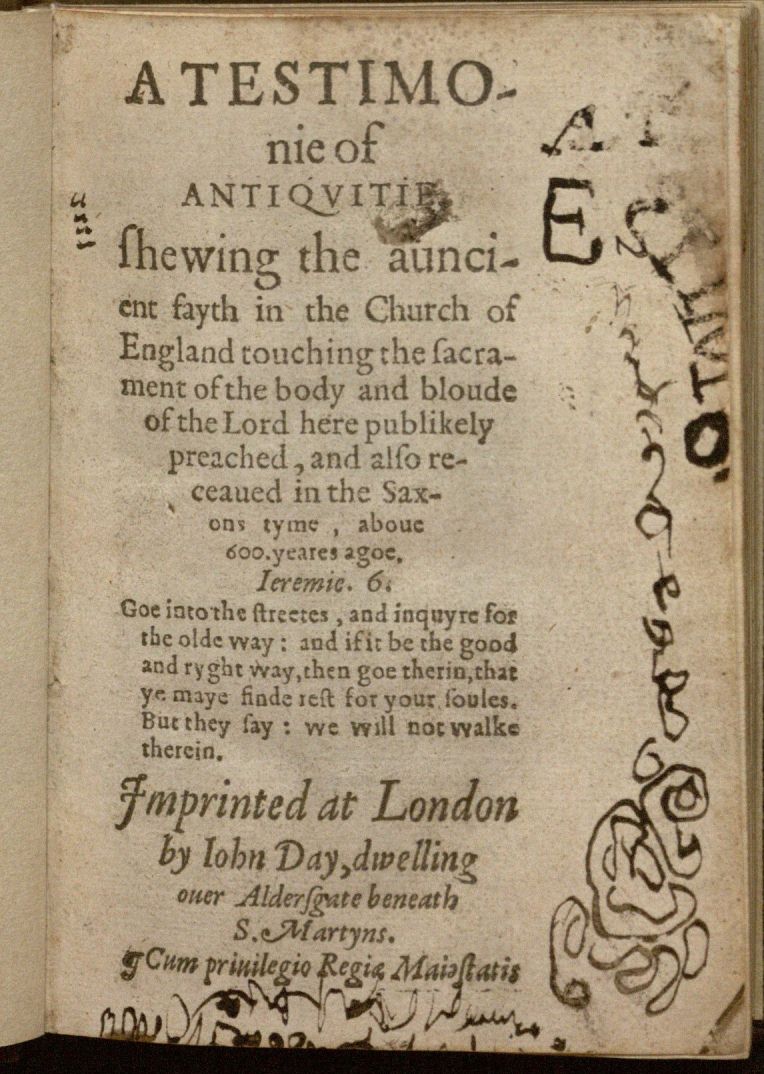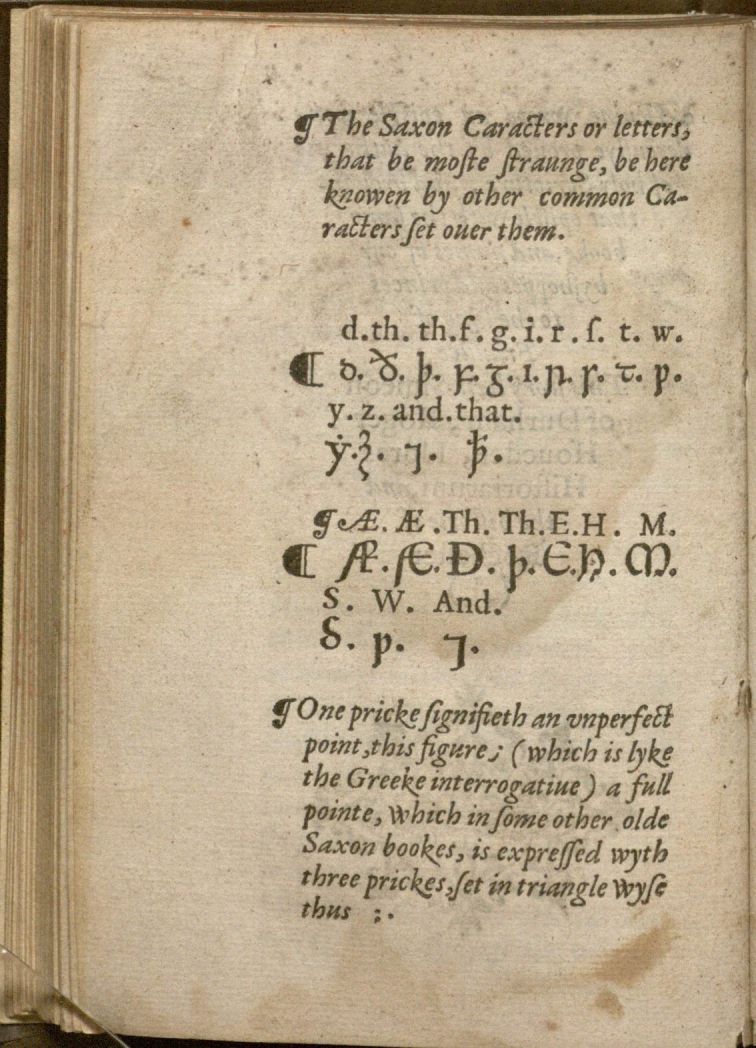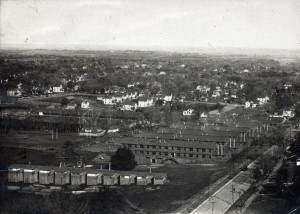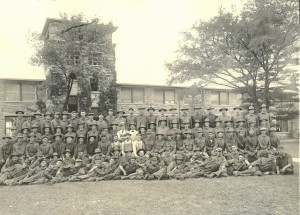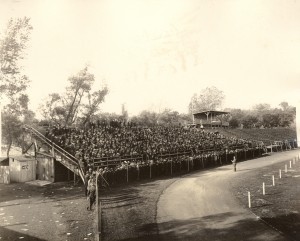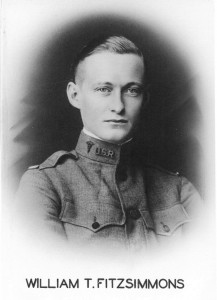KU Anniversaries: A Cause for Celebration
July 23rd, 2014As the University of Kansas approaches its 150th anniversary in the fall of 2015, one might be wondering how the university celebrated its previous milestones. For more recent anniversaries there was a trend of looking to the future, while the earlier ones looked to the past. What path will this anniversary follow? My guess would be a little bit of both, but only time will tell.
The Quarter-Centennial: 25th Anniversary 1890/91
KU celebrated 25 years of its history with a gathering of alumni, school and state officials, and the publication of a book (two practices that would continue for most anniversaries). The book, written by M.W. Sterling, sold for $1.00 and covered several aspects of the university’s first 25 years. One memorable section recalled some practical jokes. During commencement a grinning skeleton descended from a hole in the rafters, dancing and shaking to the band’s music. On its toe was stuck a piece of paper that read the Latin word ‘prex’. What does ‘prex’ mean you may ask? The faculty.
The Semi-Centennial: 50th Anniversary 1915/16
The 50th anniversary for KU fell during international warfare, with the United States on the brink of joining the battle. This would not be the last time that KU’s anniversary would come during a World War; only 25 years later for the Diamond Jubilee the world would be at war again. With funding restricted and bigger issues to handle, the university senate understandably decided the $4,000 price tag for a celebration in May 1916 would not be possible. Chancellor Strong said the celebration would be postponed until “ways and means” could be provided. However, the following year would prove just as restrictive and the celebration never came to be.
The Diamond Jubilee: 75th Anniversary 1940/41
Following the lack of celebration 25 years earlier, KU made up for it in a grand, five-day celebration in 1941 that took three years of planning. This included a university-wide exposition, the reopening of Dyche Museum (now the Museum of Natural History), the publication of Across the Years on Mount Oread by Robert Taft, with over 300 photographs of the campus from the previous 75 years, a song contest, symposiums, class and group reunions, dinners and entertainments which included a Coronado Entrada and Kansas Cavalcade. To make sure that the returning alumni would feel right at home again on campus, 60 young women dressed in 1866 period gowns to help visitors around campus. Plus, old fashioned hitching posts were erected and the main mode of transportation was by horse and carriage.
Representative members of the previous 75 classes at the November 9th conclave (left) and One of the 60 young women dressed in appropriate 1866 period fashion (right). University Archives. Call Number: RG 0/6 (Photos), 1941. Click to enlarge.
Some of the ladies posing in a section of the diorama in the newly reopened Dyche Museum (left); A group of women showing off the horse-drawn carriages and hitching posts used for the celebration (right). University Archives. Call Number: RG 0/6 (Photos), 1941. Click to enlarge.
A participant in the Coronado Entrada on campus overlooking the football stadium. Call Number: RG 0/6 (Photos), 1941. Click image to enlarge.
Centennial: 100th Anniversary 1965/66
To be expected, the centennial celebration was a multi-day affair just like the 75th (minus the historical gowns and hitching posts). Whereas the previous anniversary celebrated the past, this one looked to the future and was highlighted by the Inter-Century Seminar, “Man and the Future.” The seminar brought together great intellectuals who discussed and lectured on the challenges of the next one hundred years. On the other hand, Clifford S. Griffin undertook a massive compilation of the past 100 years of history in his book: The University of Kansas, A History. While thoroughly covering KU’s history, Griffin kept in mind the Centennial’s theme of “progrediamur” (let us progress) and discussed the possibilities of the university’s future.
Designed by Elden Tefft, the medallion showcases the Lawrence campus silhouette along the bottom. The column on the left is composed of 26 symbols: three Jayhawks; a salamander, trilobite, bee and others denote scientific accomplishments; the wheat and sunflower for Kansas; 10 points of the star signify the nine schools and college. Call Number: RG 0/5 (photos): 1966
The official dinner for the Inter-Century Seminar. Call Number: RG 0/5 (photos): 1966
Quasquicentennial: 125th Anniversary 1990/91
In response to the Centennial’s Inter-Century Seminar, the 125th anniversary hosted a similar session, “Looking forward: KU and the Challenges of the Future”. The participants took into account what was predicted 25 years earlier and offered their opinions. According to one prediction from the 1966 seminar by Arthur C. Clarke, British scientist and science fiction writer, man will have established a permanent base on Mars by 2066. That doesn’t sound as crazy now as I’m sure it did just 25-50 years ago.
JoJo Palko
University Archives Intern








